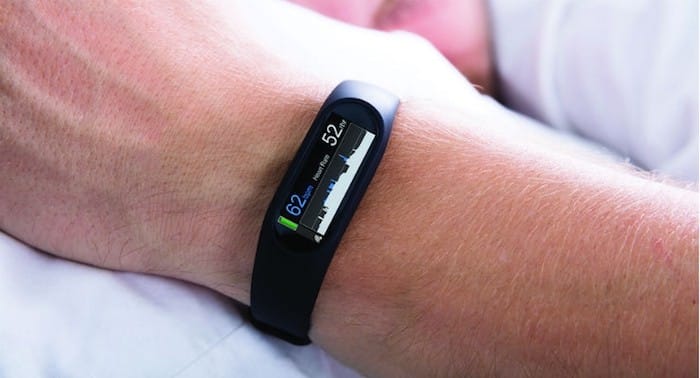By Greg Kefer
A recent Health Affairs study threw a lot of ice-cold water on the efforts of the healthcare industry to engage patients through technological innovation. Massive IT investments have enabled hospitals to offer 95% of discharged patients access to their digital health data, but only 10% of them actually have accessed this data.
Ten percent. Think about that for a second. The healthcare industry spends over $200 billion on IT every year and leaders say consumerism is a top priority. Yet, most digital engagement with patients is still so low, one wonders if patients prefer reading a packet of paper instructions or sitting on hold for 30 minutes waiting to speak to a call center agent about their health. Is it possible that consumers just prefer the old ways of managing the things that are important to them?
Lessons from other industries suggest not. The American Banking Association (ABA) found that 70% of consumers used a mobile device to manage their bank account at least once in the previous month. Money is important to people. It’s not exactly one of those consumer experiences that people look forward to, but digital banking works and most people use it. If the complex, highly regulated world of banking can figure it out, why can’t healthcare?
There are many good reasons why healthcare is so far behind other industries on the innovation curve, but consumer demands suggest that the industry is on the cusp of something big.
A disruption is coming
Consumerism and patient engagement are top of mind for the healthcare C-suite because value-based contracting, aging baby boomers, and high deductible insurance plans are giving patients a say in how (and where) they spend their money.
At the same time, multiple consumer companies are gunning for their slice of the $3.6 trillion industry pie. Amazon, Walmart, Apple, and Best Buy – the very companies healthcare providers are trying to emulate for their patient engagement programs – have declared their intent to win market share with an array of consumer-friendly, technology-centric business models.
So, what’s it going to take to win in healthcare? We know technology will be a big part of the future patient experience. But we also know patient portals and mobile apps haven’t worked in the past so there’s little reason to believe much will change there in the future.
Healthcare may actually benefit as a laggard to other industries when it comes to consumer innovation. Much has been learned over the past few decades. Mistakes have been made, and technology has matured significantly. Only a tiny fraction of a percentage of the four million plus mobile apps are regularly used, yet smartphones are powerful and everywhere. The future is mobile – the question remains how.
Walk down any city street, ride any train, sit in any waiting room and you see the vast majority of people with their heads down, interacting with their phones. Some are playing games. Others are streaming Friends reruns. And many are furiously texting with friends and family. By some estimates, consumers send 22 billion texts every day. This is where consumers (patients) are spending their time.
The rise of conversational technology
There have been tremendous advancements in conversational technology over the past few years. We are all familiar with virtual assistants like Siri and Alexa, but technology is also advancing to a point where mobile, conversational solutions are simplifying very complex, cumbersome workflows across business sectors. The potential to finally solve the healthcare complexity riddle is emerging.
Chatbots that serve as automated digital assistants can guide patients through a broad range of healthcare interactions. From the basic questions (Where’s the nearest doctor?) and reminders (Did you fast before your blood test?), to more complex tasks (I see you have been prescribed drug X, let me help you administer it properly), conversational technology can significantly improve healthcare communication.
Conversational bots engage effectively because of their interactive, guided approach. Rather than requiring patients to create new accounts and toggle screens, bots navigate patients through personalized, interactive journeys. For something complex and potentially scary like dealing with a chronic illness, a virtual assistant can be literally lifesaving.
Technology succeeds when people actually use it
Friction is a big deal in healthcare. No matter how great the technology is, it must be simple to use. When dealing with a sick, elderly or disabled patient, ease of engagement is critical. Too often, healthcare technology design is rigid, hard to access and thus goes unused. Consumer-friendly text-based conversations are the launch point for frictionless, conversation patient experiences.
Recently, Banner Health used a LifeLink chatbot to collect Health Risk Assessment (HRA) information from Medicare patients in advance of their Medicare Annual Wellness Visit (AWV). At least 51% of the Medicare patients engaged with the chatbot, and 98% of them completed their HRA via the mobile chatbot. In addition to high patient satisfaction, Banner saw a 70% decrease in AWV appointment cancellations. This was a patient population of “low tech” senior citizens, so imagine the possibilities across the full patient spectrum. We are beginning to see similar stories across all sectors of the industry.
Interactive, engaging technology can be simple and secure. It can deliver patient satisfaction and operational value – the ultimate two for one. Factor in patient engagement rate improvements that go from 10% to 51% and there is hope that technology works for patients and that’s a good thing for everyone. Just ask the bankers.
Greg Kefer is Chief Marketing Officer of LifeLink.
The Editorial Team at Healthcare Business Today is made up of skilled healthcare writers and experts, led by our managing editor, Daniel Casciato, who has over 25 years of experience in healthcare writing. Since 1998, we have produced compelling and informative content for numerous publications, establishing ourselves as a trusted resource for health and wellness information. We offer readers access to fresh health, medicine, science, and technology developments and the latest in patient news, emphasizing how these developments affect our lives.








